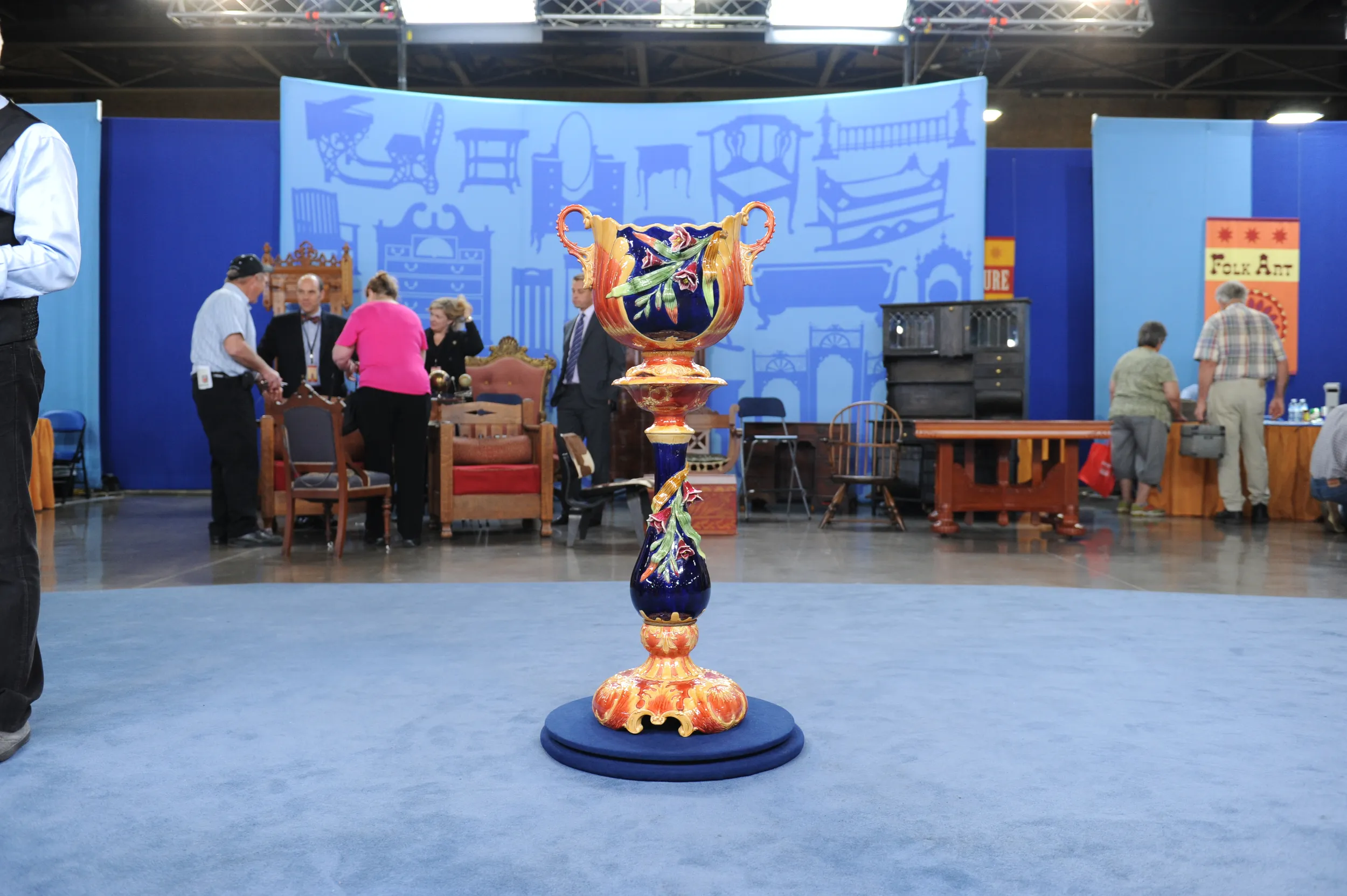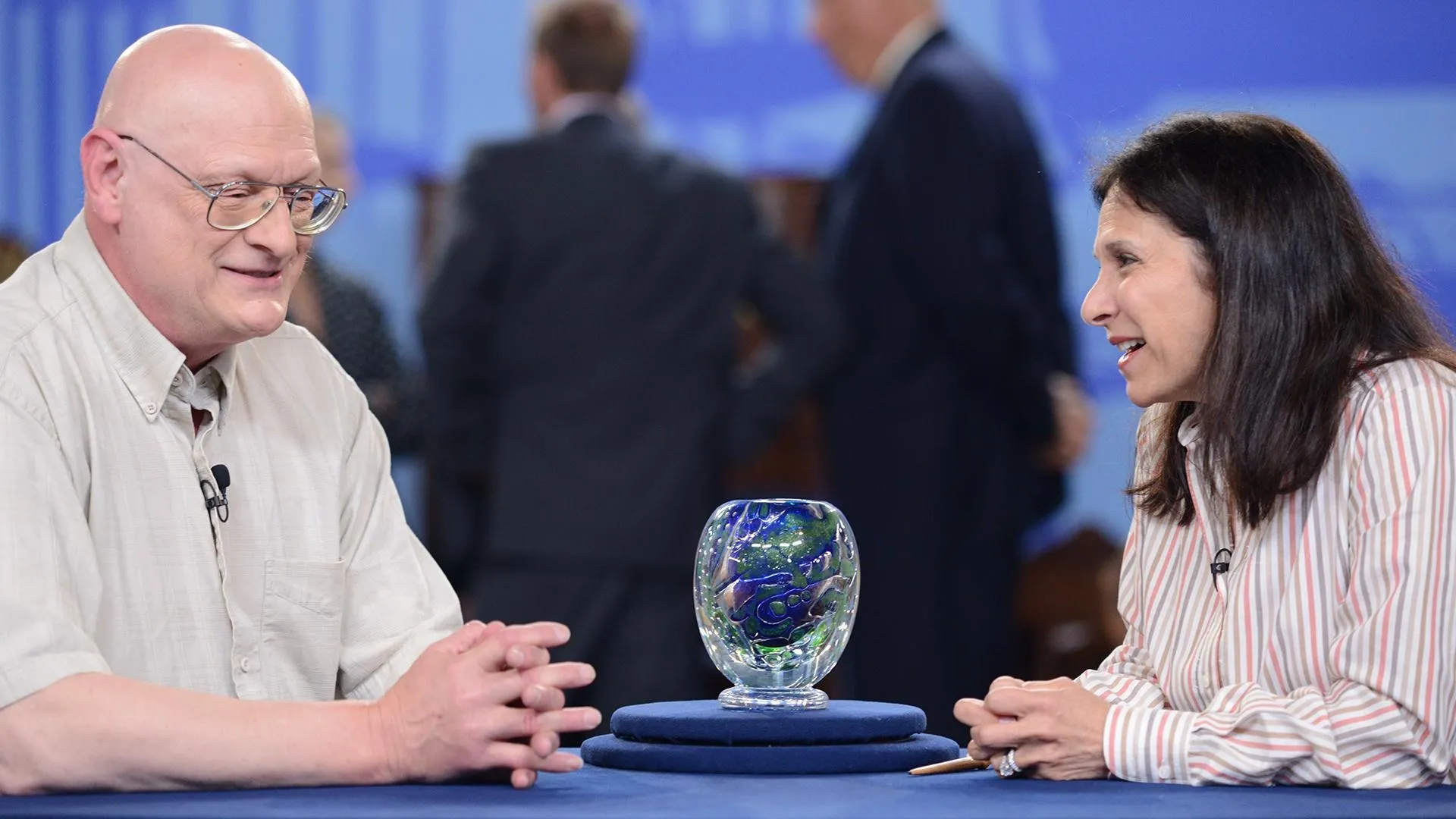GUEST: This is a piece that was given to me from my father, who received it from my grandfather. And he received it from a lady that he repaired shoes for back in Minneapolis, Minnesota.
APPRAISER: How long ago did your grandfather get this gift from this lady?
GUEST: He opened the shoe shop that he had in 1918, and so I'm guessing it has to be somewhere, like, near the '30s, maybe.
APPRAISER: It's such a good example of its type. The concept of what we call a jardinière on pedestal, basically a plant stand designed to stand in the corner of a room in a bay window and have a fern in it or a big tropical plant or something, is not an unusual idea. It starts in the Victorian age and goes through certainly until World War II. They were still very popular. So many of them were made, and most of the ones we see, by the way, at ANTIQUES ROADSHOW have very little value. But this is such a nice one. First of all, it's French, probably southern French, I would think, and in a way, the best ones are French. They made great ones, too, in England, but the French have a style about them, particularly with this organic type of design, these natural flora, that cannot be beaten, I think. It was probably made about 1890. It's made in a palette of glazes that we call majolica, and majolica is a brand, if you like, of ceramic art that began in England in about 1850, but by this time was made in France and elsewhere. It's got all the right colors to make it really pop. This rich colored ground, what we call cobalt blue ground, is what people look for. It’s very strong, it’s very powerful, it’s very appealing. If this had a different palette of colors, if it didn't have the cobalt blue as the main color, let's say it was white or yellow or something pale, it would be worth a lot less. The condition is terrific. Your grandfather clearly looked after it. I think if it was in the right place in the right antique shop, it could certainly carry a retail price of $3,500.
GUEST: Oh, wow.









